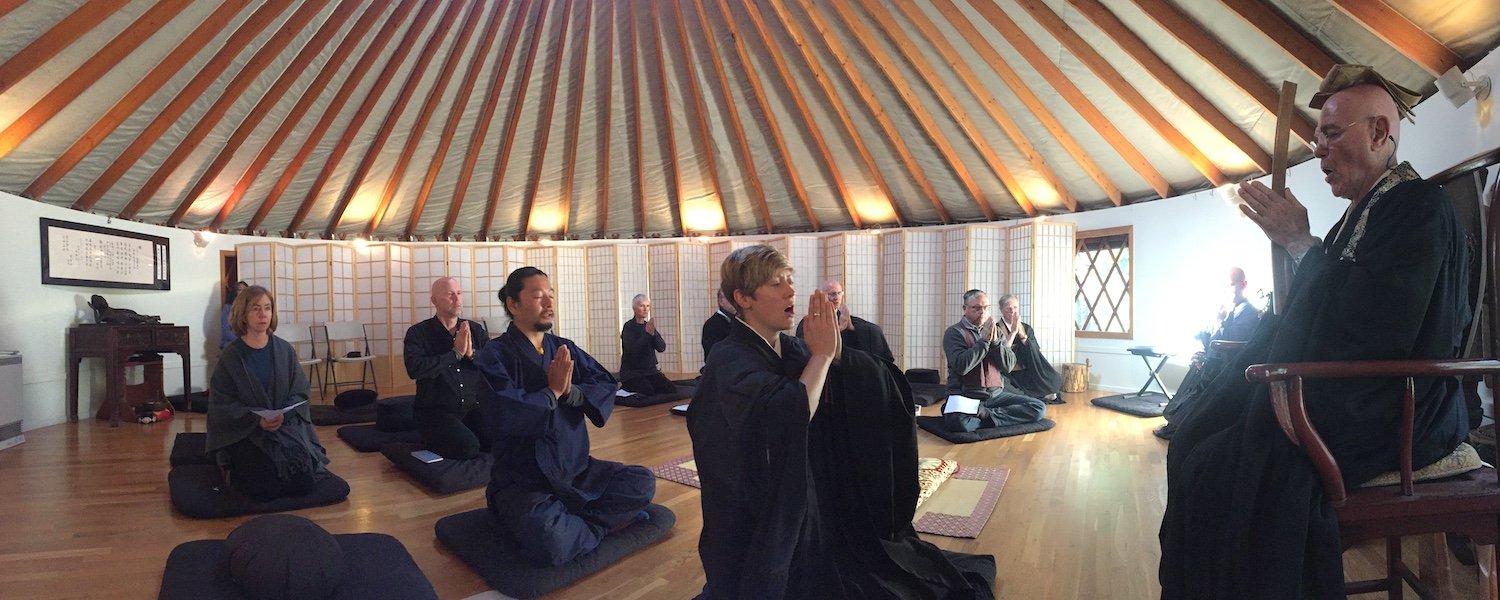QUIET MIND
DEEP FEELING
The life of a foolish Buddhist monk
Liberating us from the diseases of samsara that never ends, with the ocean of great bliss of both samsara and nirvana you guide beings to the supreme awakening–
glorious Phagmodrupa, I bow at your feet.

Zen’s roots are in monastic practice.
A proper monastery, in any religion, is a place of transformation
transformation of body, of speech, and of mind.
A Zen monastery is especially rigorous and disciplined in its techniques.
The schedule is exacting but changing every day. It is posted after sundown the night before at one location.
A day in the life
of a monk.
The Schedule.
The wake up is at 3:30 in the dark.
It’s very cold in the winter.
Sitting meditation begins at 4:00 wearing formal robes.
Every minute of the day and night has an activity, a location, and a time to be somewhere and ready with texts or tools.
For each activity a change of robes is compulsory, and the time between the end of one event and the beginning and location of the next for many weeks seemed impossibly short.
Every action had to be done mindfully and quickly. Perfectly the first time.
No time for adjustments.
I had to search for ways to minimize the steps to put on robes my robes, with the juban, the kimono, the koromo, and the okesa collars all perfectly aligned and adjusted.
I was always slower than the others and compelled to run to be on time to the next activity. There are very few moments of the day “between”.
After the evening service, there is an hour and a half to study sutras, sometimes required texts, or anything else. The monk next to me studied modern German philosophy. This time this also for taking a shower, and a hot bath every five days.
Work Practice.
Much of the day is scheduled for work practice.
The first period is cleaning the monastery, meticulous cleaning.
We divide into small groups of monks and nuns and are responsible for well defined tasks in specified areas.
We begin work together with a prayer, and end work together with a bow.
We do the same work every day for usually two weeks.
We do the same work in the same way every day since 1433, when the monastery was founded.
Part of one of my practices was to carefully sweep a wooden floor
and then wash it with a cloth that was at a very exact spot between wet
and dry, and the floor had to be washed by hand.
For me I had to do this on my hands and knees.
The bucket of water was often ice cold.
The funny part of this, really kind of a joke,
is that very rarely did anyone walk on this floor.
There is never anything requiring a decision.
You join with the pack. You do the same work daily
in the same way it has been done for centuries.
There is an unspoken expectation of perfection.
This requires total concentration and relaxation at the same time.
It can be humbling.
I am a respected, well-educated and trained garden builder,
yet to this day I am not able to inscribe
with a bamboo branch broom a straight series of lines
about two feet wide and forty feet long.
One day I was alone in the garden which is bisected
by a stone path to the Buddha Hall. It is a long path.
To your left as you enter through the awesome gate
is a monument to a much-appreciated school of religious music.
On both sides as you walk along the path there are some plants,
but the dominant feature is that the surface is striped
by the daily raking of the small gravel by the monks.
The area is clean of even fallen leaves from the night before.
So, being alone this looked to me like one big sandbox.
I drew, in the sand, ellipses radiating from beautiful plants
(such as they were). I also discovered that although I could not inscribe straight lines in the sand, I was a magician with curves.
I was very proud of my work.
When the “boss”, the senior monk on the work crew,
who was something of a genius and whose opinion I cared about,
walked into the space, I suddenly became very frightened.
This could be perceived as a desecration to my fellow monks.
He looked at it for a long while, and said to me:
“Shall we make this the new paradigm?
When he said these words, I had an inner awakening.
“Not one. Not two.
Not one and a half.”


